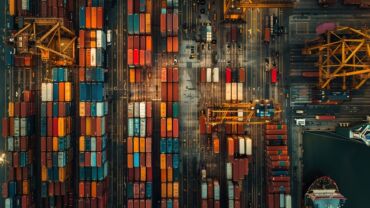Earlier this year, the Automotive Industry Action Group (AIAG) partnered with Thomson Reuters to survey automotive supply chain professionals in the Asia-Pacific region about challenges facing the industry between now and 2025.
The resulting report, The Future of the Automotive Supply Chain, identified several areas of concern, including trade and regulatory changes, the trend toward electrification and automation, and societal demands for more features on standard vehicles at a lower cost.
AIAG/Thomson Reuters is currently conducting a similar survey of auto-supply-chain experts in the Americas (North America, Mexico, Central and South America). Industry analysts expect many of the same issues to arise in the upcoming report, albeit in varying degrees, because no matter where automobiles are manufactured, their supply chains are global. Different regions face specific challenges of their own, however, and the United States/Mexico/Canada bloc is extremely important and influential to the industry overall.
The Future of the Automotive Supply Chain Survey is currently open and awaiting your participation here. Results and analysis will be shared with participants in Q4 of this year.
You can download the previously released Asia-Pacific report here.
Still, one of the unifying themes that emerged from the first AIAG/Thomson Reuters report was a generally high degree of uncertainty about many aspects of auto industry writ large. How will the U.S.’s tariffs on China and other countries affect suppliers? How soon will electric vehicles overtake combustion engines? Which battery technologies should manufacturers invest in? When will autonomous vehicles go mainstream? How will mounting environmental concerns affect policy and regulations? Are concerns about cybersecurity underestimated or overblown?
For supply-chain experts, these questions are extremely important, because the answers will ultimately dictate how auto manufacturers navigate the volatile and ever-changing marketplace for all motor vehicles.
Challenges ahead
One industry expert who is eager to see the results of the upcoming survey is Terry Onica, director of automotive marketing for QAD Inc., a leading supplier of enterprise and supply-chain management solutions for the automotive industry. According to Onica, the first report accurately reflected many of the challenges and issues facing supply-chain professionals — but it also revealed some uncomfortable trends that should concern anyone whose livelihood depends on making automobiles in the 21st century.
“One of the interesting things about the first AIAG/Thomson Reuters report was how international trade and regulatory issues rose to the top of the list — two or three years ago, those weren’t even a concern,” Onica says. The U.S.’s trade conflicts with China and Mexico, along with sanctions and regulatory changes in other countries, have changed all that. “The heat caused by the U.S.’s changing trade policies has everyone looking at trade now,” Onica adds.
Trade concerns in the Americas are likely to be top of mind as well, because the automotive industries in the U.S. and Mexico are so economically intertwined. But what is really vexing manufacturers, says Onica, is the uncertainty of the long-term market outlook and the difficulty of future planning in an unstable world.
“We have these trends toward electrification and automation that everyone knows about, but no one knows how fast these changes are going to take place,” says Onica. “The shift to electric vehicles means phasing out some aspects of production and phasing in others. It’s extremely complex, and I’m not sure manufacturers are doing the kinds of scenario-planning that are necessary to prepare for a future with so many unknowns.”
Electric & autonomous vehicles
One of those unknowns is the rate at which electronic vehicles (EVs) will be adopted by the general public, particularly in the U.S., where gas is still relatively cheap and environmental regulations have been relaxed, at least for the time being. “In America, there is no government mandate to get rid of combustion engines, and Americans haven’t really felt the pain of high gas prices, so the market for EVs isn’t progressing as quickly as many people expected,” explains Onica. Hesitancy in the market has also slowed efforts to install a reliable electronic re-charging infrastructure for EVs, she says, and the technology is evolving so quickly that many consumers are in a “wait and see” mode.
The imminent arrival of autonomous vehicles (AVs) is another societal megatrend that is testing the predictive powers (and patience) of manufacturers, notes Onica. Virtually all major auto manufacturers are investing heavily in self-driving technology — but, much like EVs, the timelines for widespread adoption keep getting pushed back, so these investments have yet to bear much fruit. And while most manufacturers say they will have production-ready AVs by the early 2020s, the technological infrastructure for widespread adoption simply isn’t viable yet, nor is the market. Prior to its recent IPO, the ride-hailing service Uber, which is expected to lead the AV charge, began telling investors that it will take roughly another decade for its AV technology to mature.
“For the supply chain, AVs will introduce a whole new level of complexity,” says Onica, citing the electronics and systems integration with Wi-fi and satellites, as an example. “People will want different features, such as a comfortable place to sleep, or a large screen to watch movies. The whole idea of what a ‘car’ is will change completely. But again, it’s happening more slowly than expected.”
It will take a least a decade to overcome safety concerns, technological issues, problems of scale, insurance logistics, and public skepticism, so don’t expect widespread adoption of AVs until “closer to 2035,” she says.






